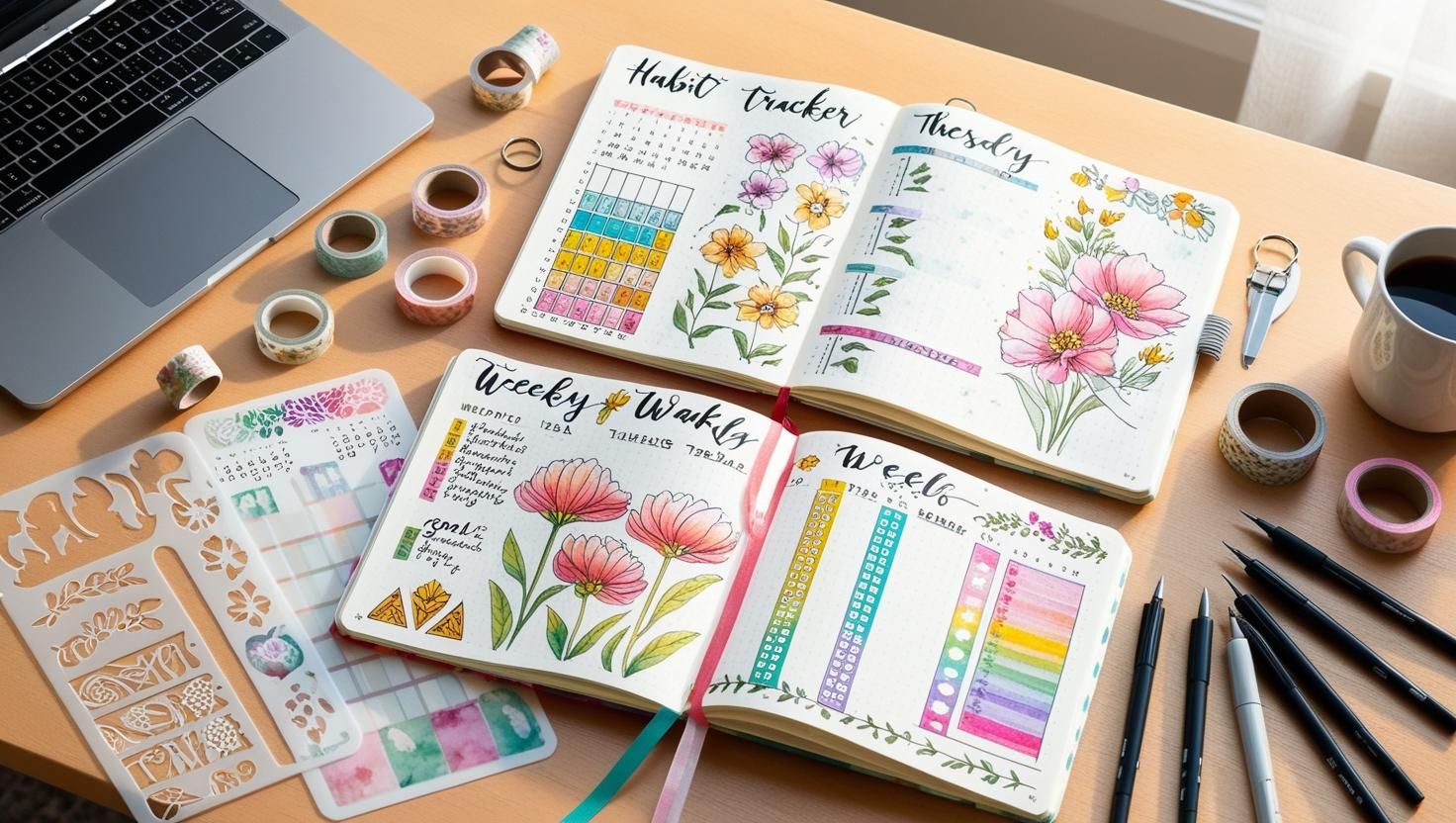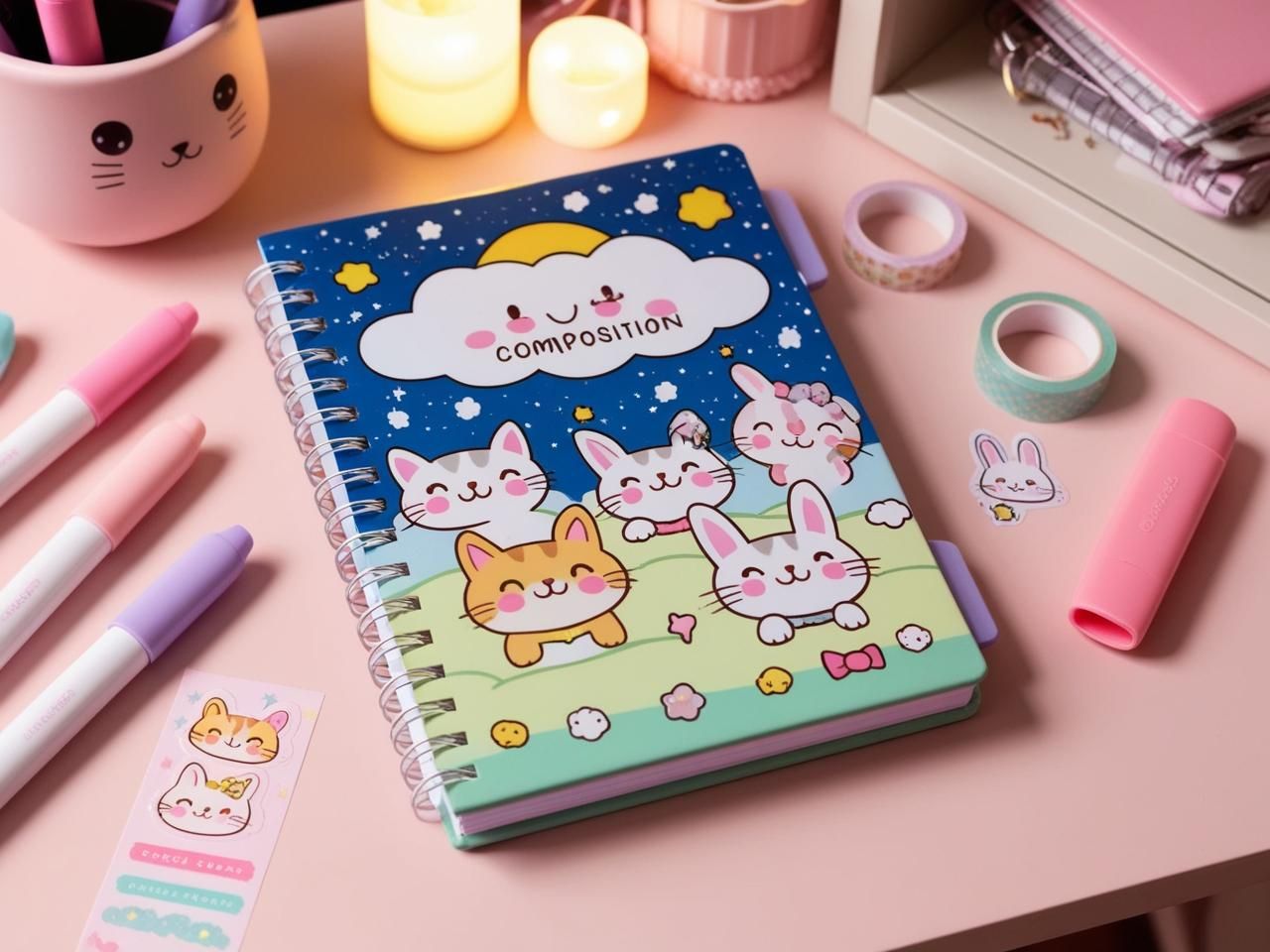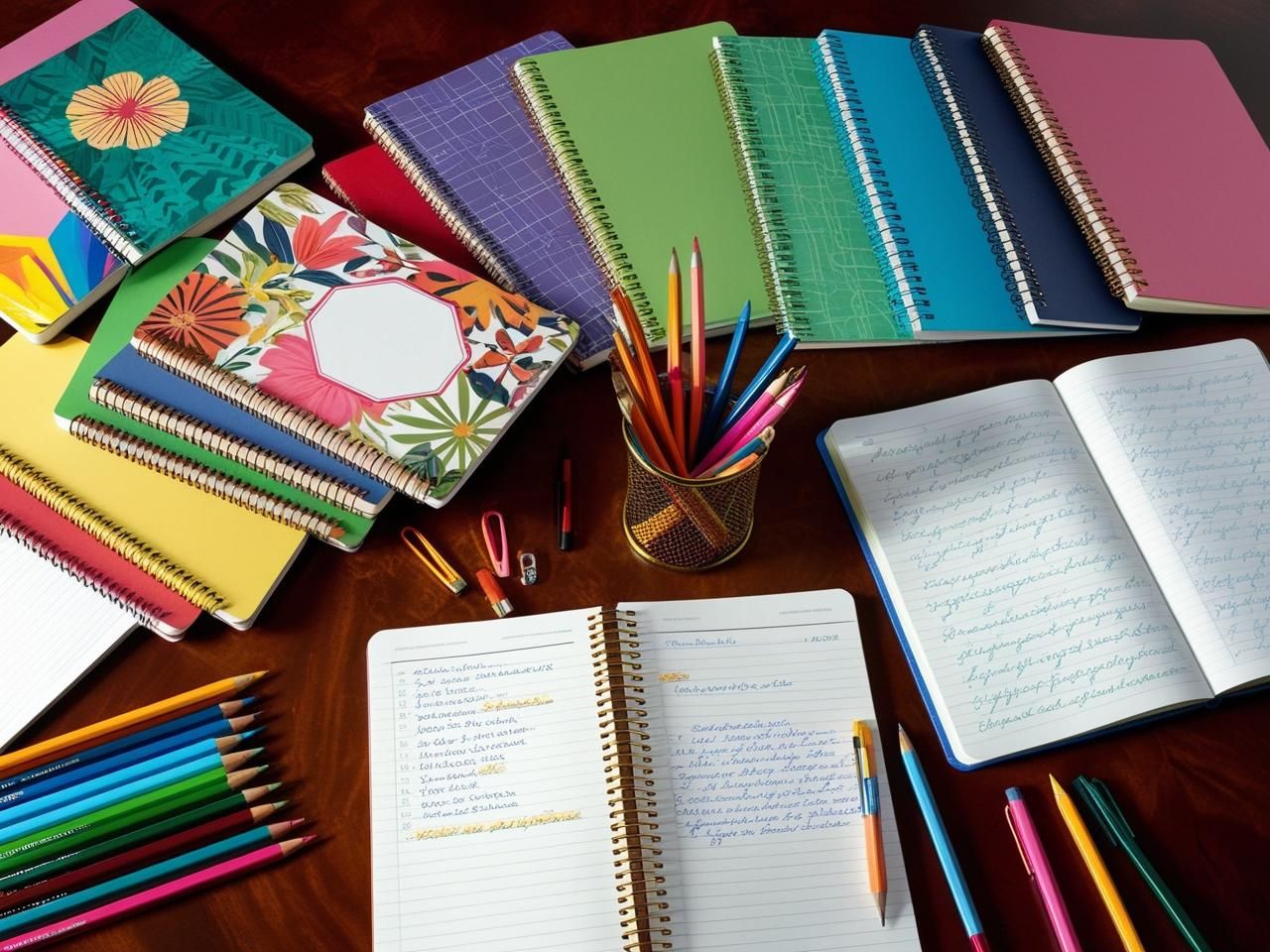- COMPOSITION NOTEBOOK
- Guides
- How to Use a Bullet Journal for Habit Tracking: The Ultimate Step-by-Step Guide
How to Use a Bullet Journal for Habit Tracking: The Ultimate Step-by-Step Guide
- Category: Guides ,
- Tags: Bullet Journal

Building better habits is the foundation of personal growth, productivity, and self-improvement. But sticking to new routines can be challenging without a structured system. This is where a habit tracking bullet journal becomes a game-changer. By visually tracking progress, you can stay motivated, reinforce positive behaviors, and eliminate bad habits.
A bullet journal is a flexible and creative tool that helps transform daily actions into consistent habits. Whether you’re tracking exercise, hydration, or productivity goals, the right habit tracker layout can provide structure and motivation.
In this guide, we’ll walk you through the step-by-step process of setting up a habit tracker in a bullet journal, from choosing the best layouts to staying consistent. If you want to explore more ways to optimize your journal for productivity, check out our Ultimate Guide on Creative Uses for Composition Notebooks.
Looking for ready-to-use templates? Discover the best habit tracker templates to help create structured tracking pages.

Why Habit Tracking in a Bullet Journal Works
Tracking habits in a bullet journal is more than just recording daily tasks—it’s a proven strategy for behavior reinforcement and personal growth. By using a visual representation of progress, you can stay motivated, identify patterns, and develop long-term consistency.
The Psychology Behind Habit Tracking
Studies show that habit formation is strongly influenced by visual feedback. When you check off a completed habit, your brain releases dopamine, reinforcing the behavior and making it more likely to stick. A habit tracking bullet journal creates a simple yet effective system for keeping yourself accountable.
- Increased Motivation: Seeing progress visually encourages consistency.
- Improved Focus: Tracking habits keeps important routines at the forefront of your daily planning.
- Better Self-Discipline: Regular habit tracking helps identify strengths and areas for improvement.
Bullet Journals vs. Digital Habit Trackers
Many people wonder whether a bullet journal is better than a digital habit tracking app. While apps can send reminders, a physical journal has several unique advantages:
- Mindful Engagement: Writing by hand strengthens memory retention.
- Customization: Bullet journals offer complete control over layout and structure.
- Reduced Screen Time: Journaling provides a break from digital distractions.
How to Set Up a Habit Tracker in a Bullet Journal
Creating a habit tracker layout in your bullet journal is easy and fully customizable. Whether you prefer a simple grid tracker or a creative circular spread, the key is finding a format that keeps you engaged and consistent.
Choosing the Right Habit Tracking Layout
Different layouts suit different needs, so it’s important to find the one that works best for your lifestyle. Here are some popular habit tracker styles:
- Grid Tracker: A simple table where each row represents a habit and columns track completion over time.
- List Format: A checklist approach for marking daily progress.
- Circular Tracker: A visually appealing wheel design to monitor long-term goals.
- Color-Coded System: Using colors to track habit frequency and intensity.
Step-by-Step Guide to Creating a Habit Tracker
Follow these simple steps to set up a functional and effective habit tracker in your bullet journal:
- Step 1: List the habits you want to track (daily, weekly, or monthly habits).
- Step 2: Choose a layout that fits your tracking preferences.
- Step 3: Add color coding, icons, or symbols to personalize the tracker.
- Step 4: Review progress regularly and make adjustments as needed.

Want an easy way to design habit tracking layouts? Discover the best habit tracker templates to create structured tracking pages effortlessly.
The Science of Habit Formation
Did you know that habit tracking rewires the brain? Research in neuroscience shows that consistent habit tracking strengthens neural pathways, making new behaviors automatic over time.
Studies also reveal that visual habit trackers increase motivation. The act of physically checking off a completed task releases dopamine, the brain’s reward chemical, reinforcing positive behaviors and helping them stick long-term.
Best Habits to Track in a Bullet Journal
A habit tracking bullet journal can be customized to monitor all aspects of life, from productivity and personal growth to health and wellness. Below are some of the most popular categories to track.
Productivity & Time Management Habits
Tracking productivity habits can help you manage your time efficiently and eliminate procrastination. Common habits include:
- Daily Task Completion: Mark off completed tasks for a sense of achievement.
- Time Management: Use a Pomodoro tracker to improve focus.
- Reading & Learning: Set reading goals to build knowledge and consistency.
Health & Wellness Habits
Your bullet journal can also be a powerful tool for tracking physical and mental well-being. Consider adding:
- Exercise & Fitness: Monitor workouts and progress toward fitness goals.
- Hydration & Nutrition: Track water intake and healthy eating habits.
- Sleep Tracking: Ensure better sleep quality by logging sleep hours.
Self-Improvement & Personal Growth Habits
Self-improvement tracking can boost motivation and encourage personal growth. Useful habits include:
- Journaling & Gratitude: Develop a daily gratitude practice for a positive mindset.
- Mindfulness & Meditation: Log meditation sessions to track progress.
- Skill Development: Monitor new skills or hobbies to stay consistent.
Maintaining Consistency & Staying Motivated
A habit tracker is only effective if used consistently. Here’s how to stay motivated and maintain long-term habits:
- Make Habit Tracking Enjoyable: Add color, stickers, or creative elements.
- Use Reward Systems: Treat yourself when you hit milestones.
- Accountability Partners: Share progress with a friend or journaling group.

Want to enhance your habit tracking experience? Shop for bullet journaling pens and accessories to make your journal more functional and enjoyable.
Famous People Who Used Habit Tracking for Success
Did you know that some of history’s greatest minds used habit tracking to enhance productivity and personal growth?
Benjamin Franklin meticulously tracked his daily habits, setting personal improvement goals to refine his character and skills. Jerry Seinfeld used a habit tracker method known as “Don’t Break the Chain” to ensure he wrote jokes daily, leading to his massive success as a comedian.
More recently, James Clear, author of *Atomic Habits*, has emphasized how small daily habits lead to major long-term achievements. His book outlines how visual habit tracking can help reinforce positive behaviors and eliminate bad ones.
RELATED POST
Composition Notebook by Pieffeweb | Cookie Policy | Privacy Policy | Disclaimer














